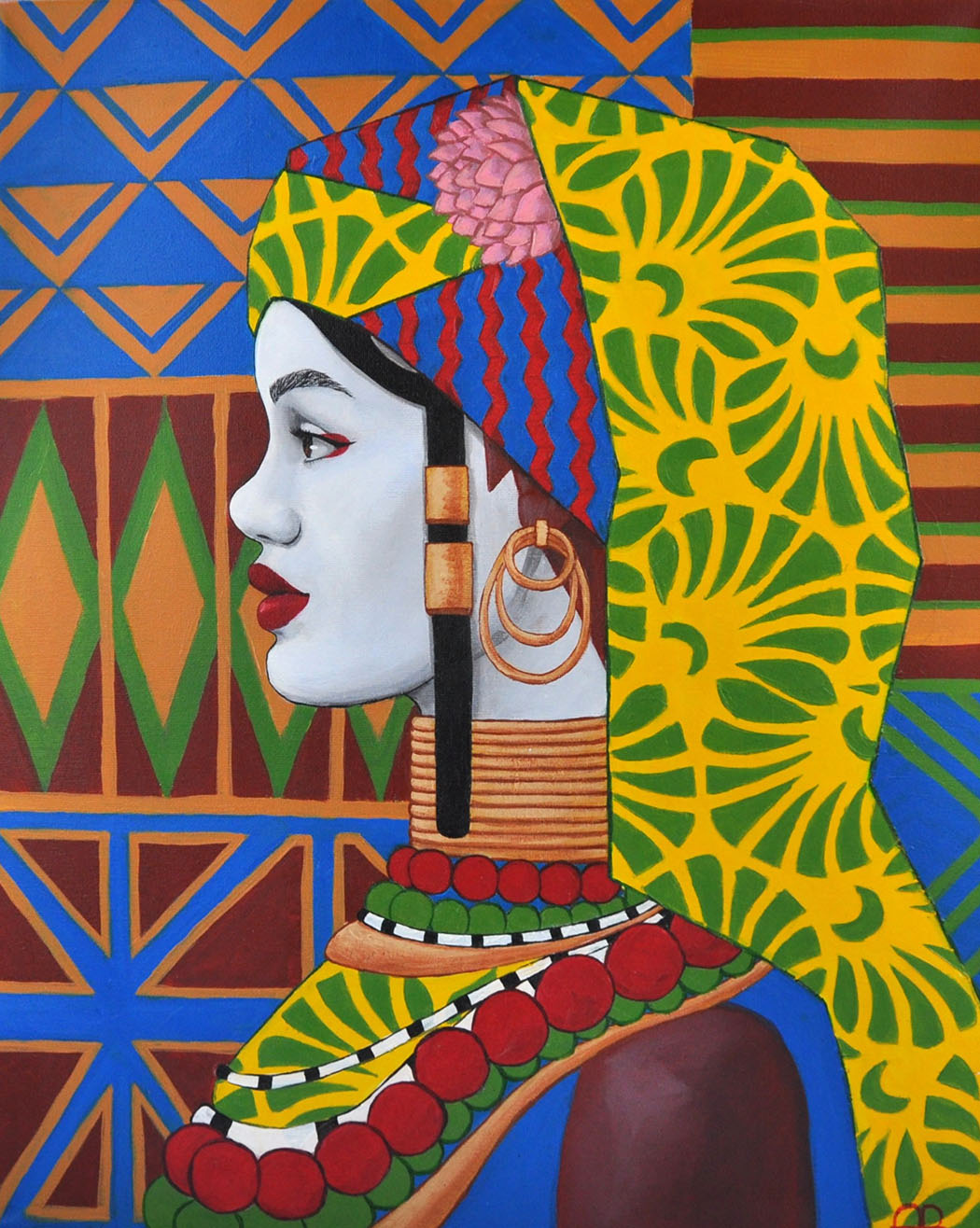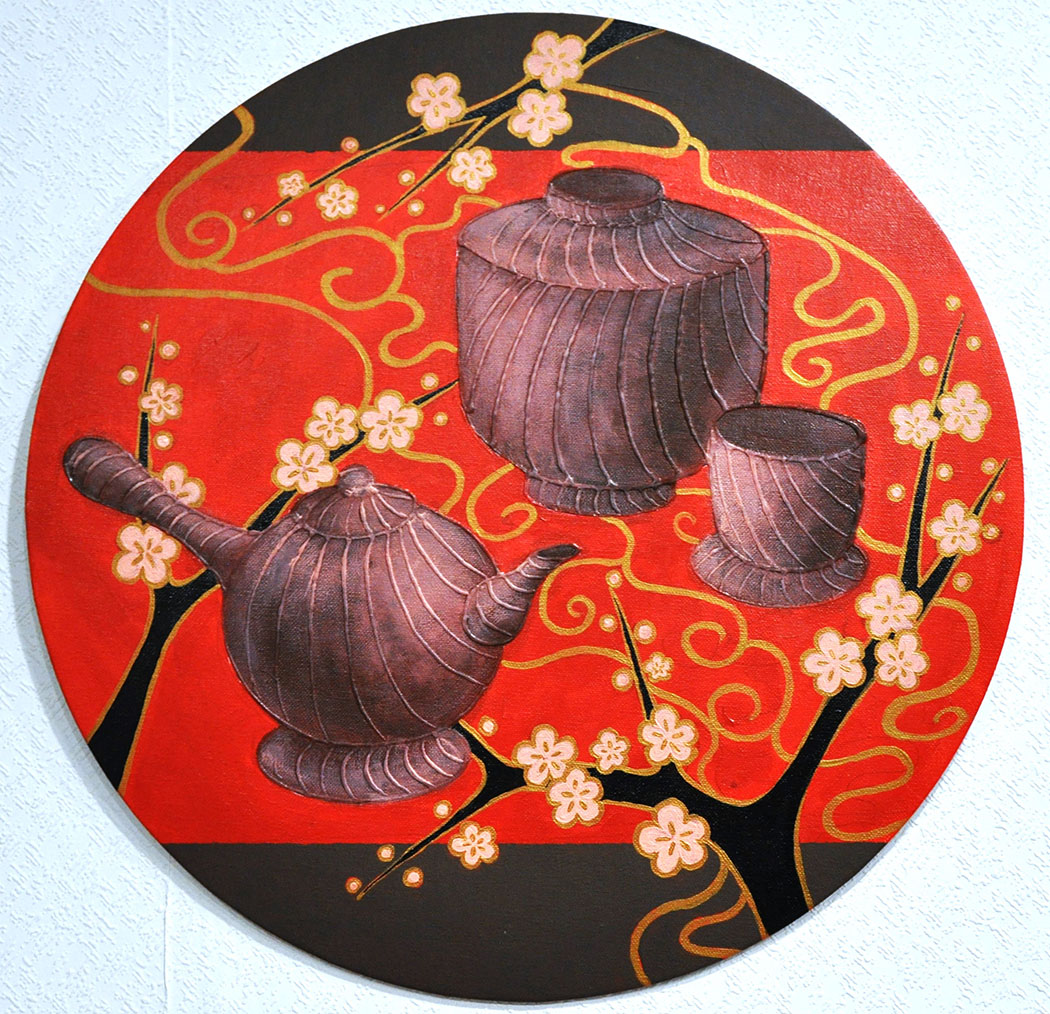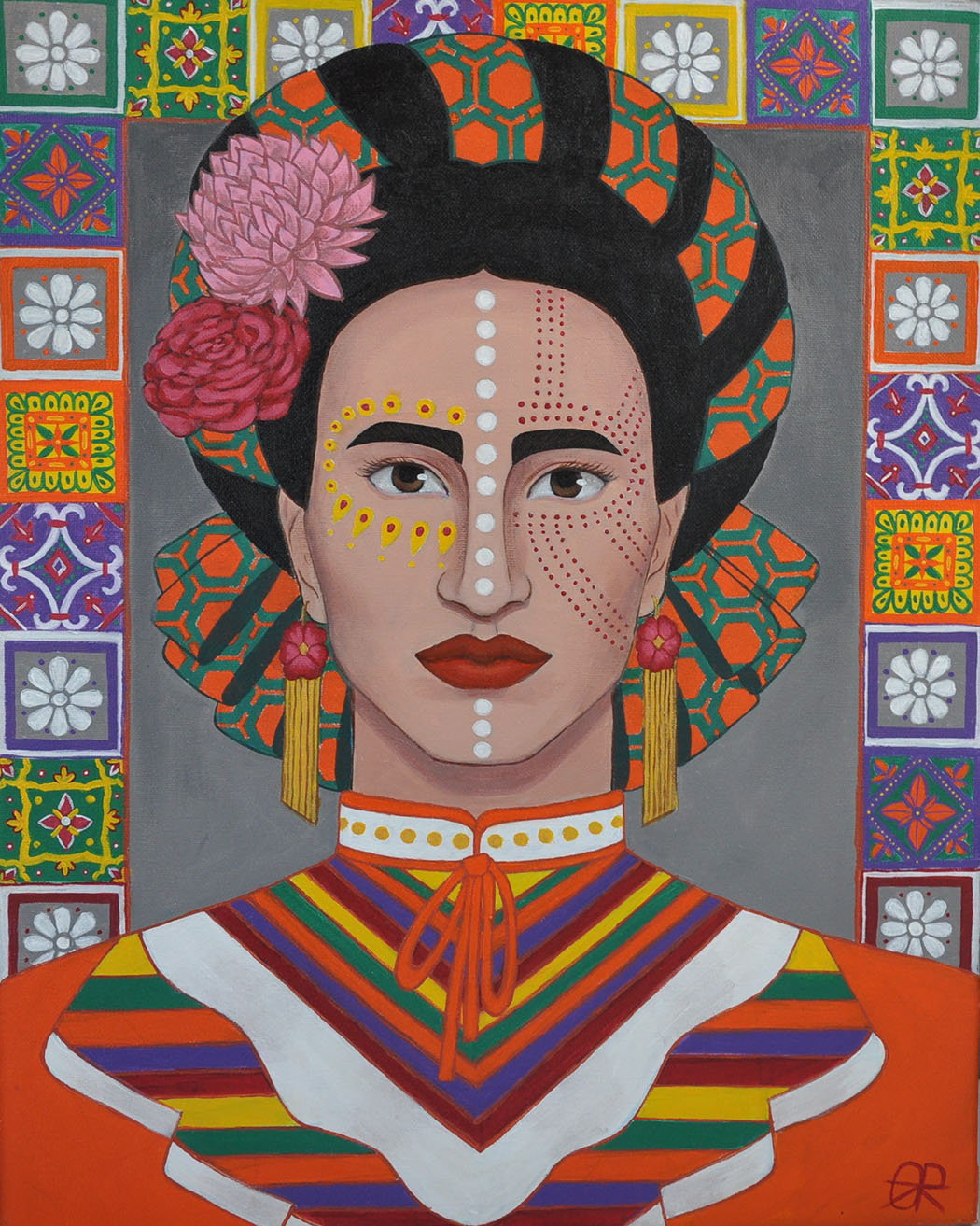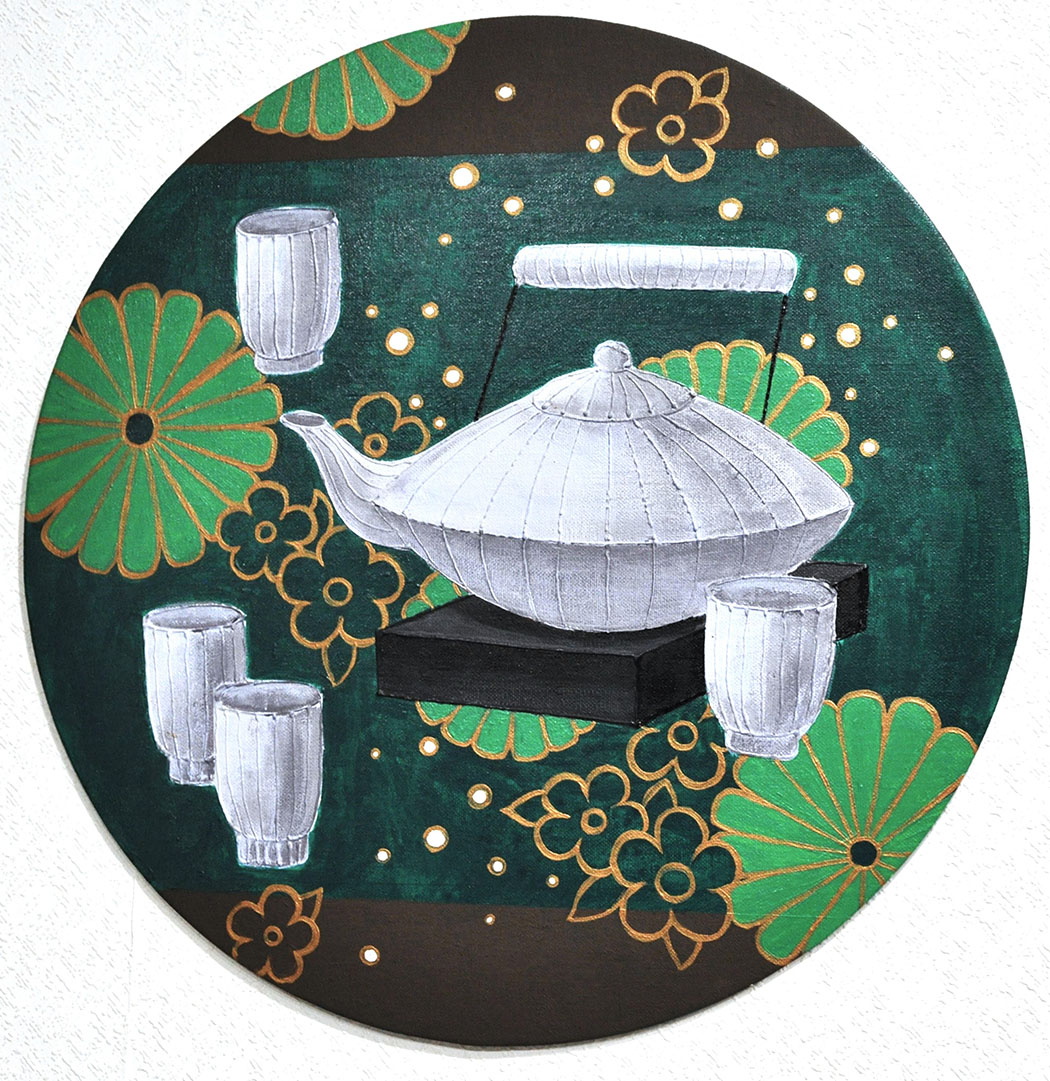Orzhikhovskaya Ekaterina
Year of birth: 1999.
Your education:
Secondary Specialized: Painter, Teacher.
Higher Education: Advertising and Public Relations.
Describe your art in three words: Brightness, Decorativeness, Traditions.
Your discipline: Creating acrylic paintings of portraits and still lifes.
Your work features a blend of traditional cultural ornaments and modern avant-garde execution. What draws you to this unique combination?
I have always been interested in mythology and history. As a child, I would immerse myself in fairy tales and legends, imagining magical worlds. As I grew older, this interest evolved into a love for various cultures and traditional ornaments, many of which have sacred meanings understood only by specific groups of people. Delving into their study and depiction is like opening a secret room. Avant-garde execution, in turn, can be compared to a bridge between the art of the past and the present. It involves reinterpreting patterns created by people who lived long ago and placing them in a contemporary context. Additionally, I love bright colors – they are often lacking in everyday life.
How has your formal education influenced your artistic style and technique?
My first education is in painting, so I have always preferred working with paints over graphic materials. Acrylic is an amazing material that combines the transparency and smooth transitions of watercolor with the thickness of oil paints. It also dries quickly, which allows for very efficient work on ornaments. Besides this, I have an education in advertising. During my studies, I was most attracted to the study of poster art of the 20th century. The works of Alphonse Mucha, Henri de Toulouse-Lautrec, and Soviet artists had a huge influence on the formation of my artistic style. Combining color and graphics, decorative and real. Maximum expressiveness in every line.
Could you describe your creative process from conception to completion of a piece?
Everything starts with inspiration, be it an object, photo, song, or feeling. Anything can serve as a trigger. Then an image appears, along with an irresistible desire to transfer it to the canvas and show it to the world. Next comes the sketching stage, first tonal and linear. Then the search for color solutions and palettes, finding references, ornaments, stencils, and creating the final sketch with acrylic paint. After that, the final stage begins: transferring the composition of the future painting onto the canvas. I carefully and accurately outline the pencil sketch with a marker, so that during the painting of the undercoat, the sketch does not get lost – it will show through the paint layer until the final stage. I fill the canvas with large color spots, make an underpainting. Using the dry brush technique, I work on shadows and textures. I meticulously detail the ornaments and apply stencils. In the final stages, I apply metallic paints and make necessary linear outlines to emphasize compositionally important areas. When the painting dries, I cover it with an acrylic-based varnish, and my work is ready to be shown to the viewers.
You have been a part of various exhibitions and competitions. Can you share an experience from one that was particularly memorable?
For the past two years, I have been helping to organize the exhibition “Inspiration from Ornament,” which features works by completely different participants: adults, children, professionals, and amateurs – all whose creativity is infused with a love for patterns. When you are not just an artist whose works are being displayed, but also a teacher whose students are exhibiting, and an assistant organizer responsible for the composition of the exhibition space – it is incredibly challenging and exciting. Organizing your own exhibition is a very responsible process that requires a lot of effort and energy. If you take on such a task, be prepared to negotiate with museums and their conditions. Many artists can be scatterbrained and forget an important detail at the last moment. But also remember that all the effort you put in will return to you twofold. The gratitude of the participants is worth it. This is a valuable experience for your psyche and stress tolerance.
As an art teacher, how do you balance your teaching responsibilities with your own artistic practice?
In reality, it is very challenging, as working with children takes a lot of energy, and teaching is a field where you often have to take work home. But I love my job. My students are an extension of myself; I motivate them to be creative and work hard. Therefore, I try to inspire them by my example, because if I can achieve something, then my students can even more so. This makes me work harder on my own creativity. During the school year, I mainly try to create sketches, and sometimes I manage to find time for full-fledged work on paintings. However, the main part of my time that I leave for myself is the holidays. Fortunately, teachers have two months of them.
What advice would you give to young aspiring artists who look up to you?
The answer will be cliché: believe in yourself, track your personal growth. Do not throw away your old works, keep at least a few to reminisce and see your progress. And there is always progress if you are working. We, creative people, easily succumb to despondency and disappointment in ourselves. After all, by creating something new, we give a part of ourselves to this world, and that is a very energy-consuming action. Find what energizes you and do not be afraid to show the world what you do. The main thing is to find your audience. If you do not show your work, how will they find you?





Leave a Reply